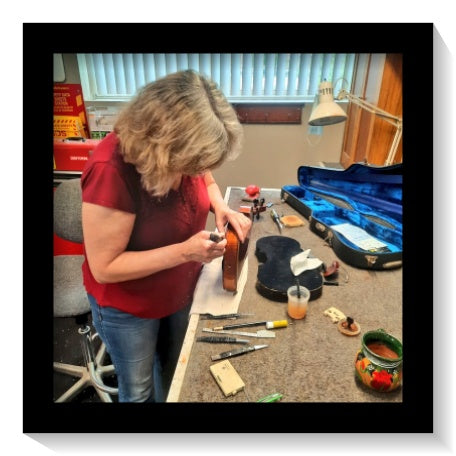
- Article published at:
- Article author: cassandra thuneman
- Article comments count: 0
Drawer menu
What is the best-sounding instrument you have? I get this question a lot and this is probably the most important category of all when purchasing an instrument. What sound or tone are we looking for? You may need to ask yourself several questions here: What kind of instrument suits your needs best, whether it be for playing in an orchestra, doing solos, or playing for your enjoyment? Sound is like food. What I like may be different than what you like. I tell my customers I like broccoli you may not Believe it or not Instruments and bows produce different sounds with different players! This is such a subjective matter that as sellers we cannot price instruments based on sound.  But for a player, this is one of your primary considerations when purchasing.
But for a player, this is one of your primary considerations when purchasing.
As stated the player must ask themselves how am I going to use this instrument? Do I want to be a soloist or a section player? If you are a wanting to be a soloist you may want an instrument that has power. Remember there are sometimes three to four trumpet players and trombones in an orchestra with their bells projected at the audience and only one of you. You must have an instrument that projects to the back of that auditorium. What if you decide you want an instrument as part of the section of the orchestra? You certainly do not want an instrument that is going to overpower your first chair player. You may be looking for an instrument that blends more. Hundreds of adjectives describe the tone of a string instrument like: "Warm, lyrical, rich, clear, deep, smooth, brilliant, so on, and so on. but tonal characteristics, such as evenness, responsiveness, and physical comfort, are of lesser importance and can even be fixed by your Luthier.
Requirements:
A solo violinist will want their sound to be big, the louder the better.
The lower register should have a luscious response without sacrificing the upper register. You may want a setup with a little more height of the strings so that it does not crack under the pressure of the bow and allows you to dig a little more and attack. All instruments should be even across the strings. No one string should stand out over the other. Check the E string up the board. Is it even?
Violists, Cellists, and Bassists usually have the same needs. They generally prefer an easy response, as opposed to violinists, who like the violin to fight back a bit. Their instruments, being bigger and heavier, requires more physical effort to get the sound out and stop the strings with the left hand. In general, if these instruments have a dark alto-like tonal quality, the response and playability will be easier than if the tone is bright and brilliant. Unfortunately, if the tone is dark on the lower strings, it will also tend to be dark on the upper strings, where
more brilliance is necessary. This is a trade-off that must be realized and
addressed. A good solution would be an instrument that is not too dark on the
bottom with a little more brightness on top.
As a note, some cellos that have a dark and deep quality will also have wolf tones that are worse than a cello with a bright, more soprano quality. Wolf tones
are the bane of existence for the cellist and the saying is "the bigger the wolf the better the cello". Wolfs can be corrected somewhat with a wolf eliminator.